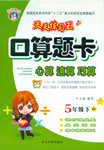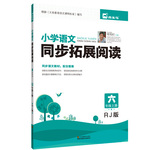题目内容
Although you have traveled to many scenic spots before, of them are as attractive as the one I visited this summer vacation.
- A.any
- B.none
- C.neither
- D.all

 口算心算速算应用题系列答案
口算心算速算应用题系列答案 同步拓展阅读系列答案
同步拓展阅读系列答案Alia Sabur, from Northport, N. Y., US, went to college at age 10. And four years later, Sabur became a bachelor of science in. Applied Mathematics summa cum laude(以最优等成绩)from Stony Brook University -- the youngest female in US history to do so. Her education continued at Drexel University, where she earned a Master of Science and a Doctor of Philosophy (哲学博士) in Materials Science and Engineering.
With an unlimited future ahead of her, Sabur directed her first career choice to teaching. "I really enjoy teaching," she said. She was three days short of her 19th birthday in February, 2008, when she was hired to become a professor at Konkuk University in Seoul, Korea. This distinction made her the youngest college professor in history, according to the Guinness' Book of Worm Records, beating the previous record held by Colin Maclaurin, a student of Isaac Newton, in 1717.
Although she doesn't start until next month, Sabur has taken up teaching math and physics courses at Southern University in New Orleans. Sabur is old enough to teach in the city, but not to join her fellow professors in a bar after work. In Korea, where the drinking age is 20, she might have more luck. In traditional Korean culture, children are considered to be 1 year old-when they are born, and add a year to their age every New Year instead of their actual birthday, so in Korea Sabur is considered 20.
On top of her unprecedented (空前的) academic achievements, Sabur has a black belt in Tae Kwon Do (跆拳道黑带). She is also a talented clarinet (竖笛) player who has performed with musicians like Lang Lang and Smash Mouth. So is there anything Sabur can't do?
【小题1】We can learn from the passage that Sabur is ________.
| A.America's youngest bachelor of science |
| B.Drexel University's youngest student |
| C.the world'syoungest college professor |
| D.the world's youngest female teacher |
| A.fourteen | B.eighteen | C.nineteen | D.twenty |
| A.Sabur might be permitted to drink in a Korean bar. |
| B.Sabur would be allowed to attend parties in Korea. |
| C.Sabur is old enough to teach at Konkuk University. |
| D.Sabur is lucky to be hired by Konkuk University. |
| A.Alia Sabur is the youngest female doctor from Stony Brook University. |
| B.Colin Maclaurin has once been the youngest college professor in the world. |
| C.In Korea, Alia Sabur is not allowed to drink for she is still underage. |
| D.Alia Sabur knows anything but Tae Kwon Do. |
Cheektowage Central Middle School can be a lot of fun. It has game nights and student dances, after-school activities, and sports teams. However, students at the school must earn the right to join in the fun. If they don’t do their homework, participate in class, and behave at all times, they’re banned(禁止) from participating in after-school activities.
Students and parents say the threat of being excluded(排除在外) appears to be working. Kenny T. of Reno, Nev., says it taught him that actions have consequences: “I learned that I need to be balanced in both my work and athletics to be rewarded for working hard.” Parent Sondra LaMacchia told The New York Times that her 14-year-old daughter is learning responsibility at Cheektowaga Central. The teen used to perform poorly in her studies, but then she was banned from a school dance. The message got through loud and clear. “It’s nobody’s fault but hers,” LaMacchia said.
Although exclusion may help teach responsibility, some psychologists say it can also be threatening, especially for students who often cause, or may cause, trouble in school. They might become more aggressive and antisocial, which is exactly what schools like Cheektowaga Central want to prevent.
Should schools exclude students from activities to get them to behave? I believe teens need school activities and that inclusion can be the answer. For some troubled students, activities can be their motivation to stay in school. “Activities such as sports may be the only thing keeping certain students in school,” says Duace Wood, a teacher at Mohonasen High School in Rotterdam, N.Y. Getting involved in after-class activities keeps troublesome students in class. Even if they don’t do as well as their classmates, they are still learning. The more time they spend at school, the less time they have to even think about starting trouble. Teams also provide support and role models, and they help build the confidence that students need to succeed. If students who don’t behave are banned from activities, they might give up on school altogether.
【小题1】Paragraph 2 is developed by _______.
| A.analyzing causes | B.giving examples |
| C.examining differences | D.following the time order |
| A.it provides role models |
| B.her daughter is aggressive |
| C.her daughter hates taking exercise |
| D. it helps teach responsibility |
| A.students who are good at sports |
| B.students who often cause trouble |
| C.teens who do well in their studies |
| D.teens who always behave themselves |
| A. Negative | B.Sympathetic | C.Satisfied | D.Supportive |
If you hear the sound of running water the next time you call a co-worker on his or her mobile phone, don’t be surprised. Three-fourths of Americans with mobile phones say they use them in the bathroom, a new study shows.
Approximately(大约) the same number of men and women have used the phone in the bathroom, according to a survey of 1,000 Americans by 11 mark, an integrated marketing agency, although men seem more attached to IT in the toilet: 30 percent of men versus(VS) 20 percent of women agreed with the statement, "I don't go to the bathroom without my mobile phone."
More than half the surveyed users (63 percent) said they have answered a phone call in the bathroom, and almost half (41 percent) reported initiating a phone call. That's not all, however. What goes on behind the walls of the stalls(小隔间) is anything a mobile phone is capable of. Sixty-seven percent said they have read a text, and 39 percent have surfed the Web. Men work more from the bathroom — 20 percent said they have participated in work-related calls, versus 13 percent of their female colleagues.
As expected, Gen Y(1981年后出生的一代) respondents(调查对象) are the pacesetters(先导者) in the "mobile everywhere" movement, with 91 percent using their phone in the bathroom. Still, older generations are not far behind. Eighty percent of Gen X(1961-1981) reported using the phone in the bathroom, as did 65 percent of Baby Boomers(1946-1965) and 47 percent of the Silent Generation(1925-1945).
While online, they are doing more than just surfing; 16 percent of Gen Y report they have made an online purchase while in the bathroom. Users of iPhones are particularly likely to browse and buy in the bathroom – 22 percent have made a purchase, versus 10 percent of Americans with mobile phones overall.
"The writing is on the stall," said 11 mark principal Nicole Burdette. "This study confirms what we all know: that the last private place is no longer private."
In the process, high-tech hygiene(卫生) is taking a hit, the survey found. While 92 percent of mobile phone users said they wash their hands after using the bathroom, only 14 percent said they wash their phones.
1.Which is the best word to replace the underlined word "initiating"?
A. receiving B. experiencing C. ending D. beginning
2.According to his words, Nicole Burdette mainly wants to tell us that .
A. no wonder mobile phones are used in the bathroom
B. the bathroom is a private place for people
C. it makes people have no privacy at all
D. more men have used the phone in the bathroom
3.What does the last paragraph of the passage imply?
A. Using phones in the bathroom has a bad effect on hygiene
B. Mobile phones should not be allowed to use in the bathroom
C. Most people care about the hygiene after using the bathroom
D. Few people wash their phones after using the bathroom
4.The attitude of the author to the use of phones in the bathroom is ______
A. supportive B. disapproval C. subjective D. objective